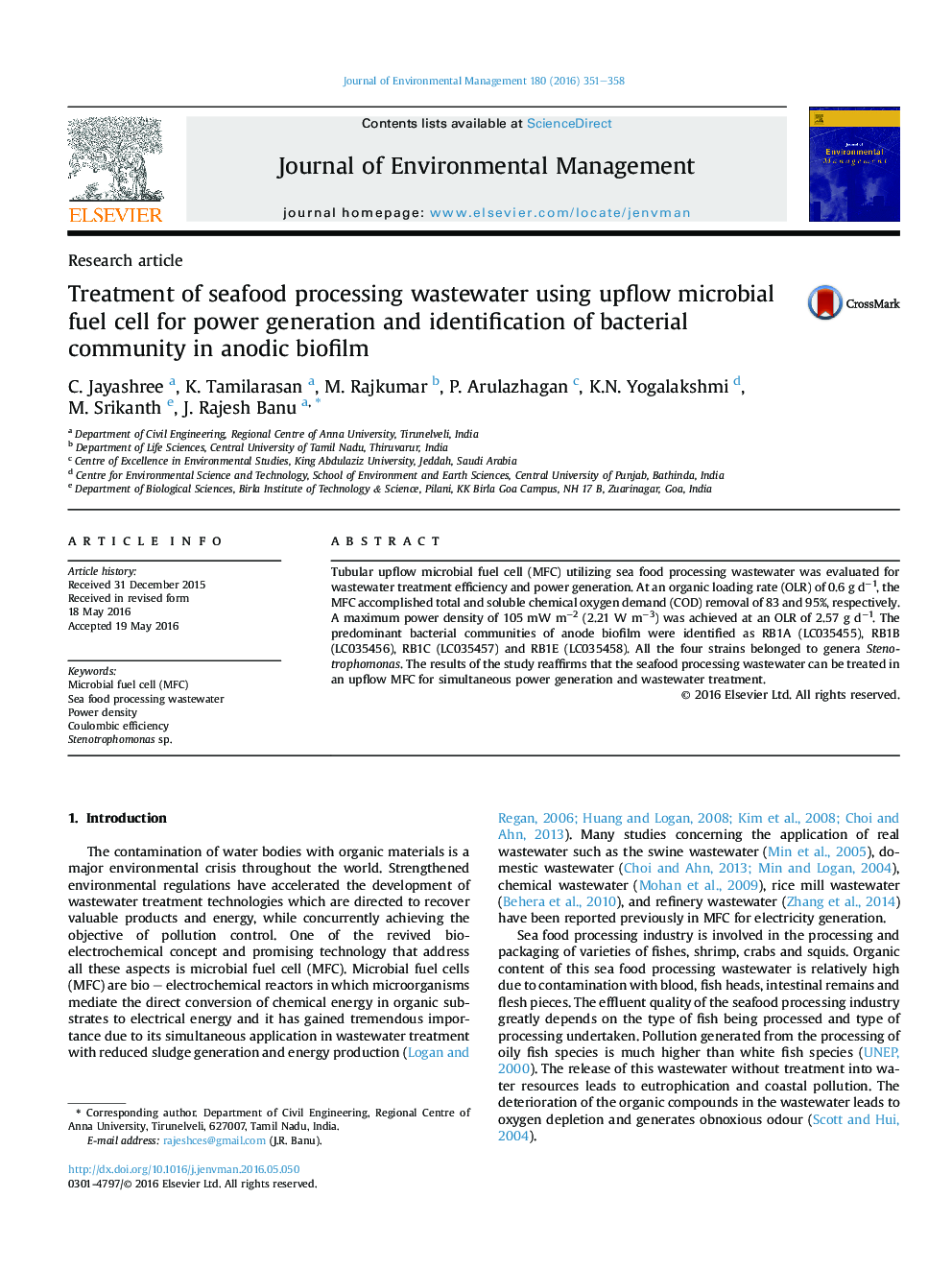| Article ID | Journal | Published Year | Pages | File Type |
|---|---|---|---|---|
| 7480162 | Journal of Environmental Management | 2016 | 8 Pages |
Abstract
Tubular upflow microbial fuel cell (MFC) utilizing sea food processing wastewater was evaluated for wastewater treatment efficiency and power generation. At an organic loading rate (OLR) of 0.6 g dâ1, the MFC accomplished total and soluble chemical oxygen demand (COD) removal of 83 and 95%, respectively. A maximum power density of 105 mW mâ2 (2.21 W mâ3) was achieved at an OLR of 2.57 g dâ1. The predominant bacterial communities of anode biofilm were identified as RB1A (LC035455), RB1B (LC035456), RB1C (LC035457) and RB1E (LC035458). All the four strains belonged to genera Stenotrophomonas. The results of the study reaffirms that the seafood processing wastewater can be treated in an upflow MFC for simultaneous power generation and wastewater treatment.
Related Topics
Physical Sciences and Engineering
Energy
Renewable Energy, Sustainability and the Environment
Authors
C. Jayashree, K. Tamilarasan, M. Rajkumar, P. Arulazhagan, K.N. Yogalakshmi, M. Srikanth, J. Rajesh Banu,
